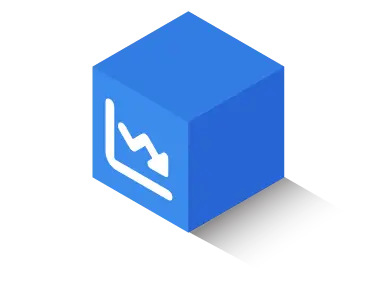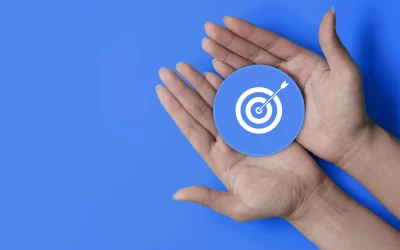The Building Blocks for a Strong Strategy
When your brand is in a place where marketing is necessary, there are key elements you have to implement. While you may want to jump straight into specific placements or types of advertising; however, before you decide to begin a social media campaign, or more traditional advertisements, or any marketing, there are some pieces you have to consider before anything else. What are the basics of marketing that everyone should know? Let’s dive in and find out.

Decide What You Need to Accomplish
The first thing you have to decide before starting any marketing campaign is what you need to accomplish. You can do this by building either Key Performance Indicators (KPIs) or Objectives and Key Results (OKRs). These should create goals and objectives for your campaign. Do you need to build a newsletter? Is your social media presence quiet and needs more engagement? Are you launching a new product? Each marketing campaign should assess this and set a KPI. When setting goals, you can’t do it all. Building your marketing around one KPI or OKR will be key. From there, the rest of your answers can come into play. The goals should encompass the company’s stated business mission, not just revenues alone.
The Corporate Finance Institute has a great model for how you can establish your KPIs. More importantly, how you decide what’s most important to your KPI. In their article, they state, “The Critical Success Factors (CSF) are the activities that the organization or its department should focus on to achieve success. A CSF must be measurable and include a specific time frame within which the organization will meet the business goals and objectives.
For example, an organization with annual earnings of $50 million may set the goal of earning $60 million over the next 12 months. Such a goal is more specific than just setting a goal of ‘increasing revenues’ without putting in place a way to measure performance, a target number, and a time frame within which to achieve the goal.”

Why You’re Marketing is Important to the Consumer
Once you determine what it is you need to achieve, the most important thing to know is the customer’s “why.” Why will your marketing be important to the consumer? “We need to grow sales” means nothing to someone looking at your website. Why would anyone want to buy from you? What makes your organization more important than others? When you enter a marketing campaign, you are competing for space in the consumer’s mind, a space that’s likely incredibly crowded. Even when you use video, the king of content, you’re posting a video along with an insane number of other companies, service providers, non-profits trying to provide support to people who need help, etc.
If you are starting your marketing without understanding why it’s important to the people you’re reaching, then you’re setting yourself up for disappointing results. Whereas, if you know why they’ll find your advertising efforts important, or emotionally resonant, building your advertising becomes much easier. If you address their needs or wants, you’ll find how to reach them.

Who You’re Talking to Is Really Important
You heard the idea that people have to understand not only what you’re offering, but why it’s important. This is why knowing who you’re talking to is vital, everyone’s why is different. Audiences can get a clearer definition today more than ever. If you only serve a specific area, hyper-targeting and geo-location can often find your target audience members in their homes or workspaces, often within 3 feet of accuracy. You can define exact ages, build lookalike audiences based on competitors, or even target campaigns neighborhood by neighborhood.
We build audience personas for our clients to help them define these target audiences better. This provides the vital information you need to understand about your consumers: Location, Age, Gender, Employment, Income, where they get their information, what brands they are dedicated to, what social platforms they use, and more information to define their way of thinking and living, etc. When you understand those elements, then you can begin to know what type of messages they’re more likely to respond to. Check out our blog post on empathy mapping for more ways to narrow down your audience persona here.
Hubspot provides a strong way to elaborate on that idea, and even differentiate between consumers of your product compared to your content. They suggest creating a “Reader Persona,” if you’re writing blog content for your website, that helps you know who will read the material you’re creating. They help clarify the variation in their blog post, stating, “The difference between a reader persona and a buyer persona is that a reader persona generally focuses on the challenges your persona might face. How can you write content that solves those challenges with blog posts?
For example, if one of the challenges you’ve identified in your buyer persona is ‘Marketing Mario wants to find a solution to low ROI on ad spending,’ you can use a reader persona to think of content that surrounds helping that challenge.”

Trying Everything Will Result in Disappointment
If you try to do it all with advertising, you need an immense budget and the reality is most marketing directors don’t have an endless budget. The far better approach is to determine a few key platforms and areas where you know you’ll reach your target audience(s), then use those places to inform where you spend your advertising. You also need to look at what is best for your industry and business. What are people looking for when they engage you? If it’s a physical product with visual appeal, create visual advertising. If it’s specific terminology, use keywords and phrases to reach them and show how you’ll alleviate the headache your company resolves.
If you’re especially new in the marketing world, it’s also important to start slow. This will allow testing, ad variations, and will allow you to see what works on a small level before you begin efforts that may be too costly or time-consuming to recover from if you make a mistake.

Honesty Goes a Long Way
In a report put together by Brandastic, it was found Honesty was the number one trait that people are looking for from a brand. It’s not a snarky sense of humor, it’s not to hop on a trend: it’s honesty.
Confidence comes from honesty. When you convey exactly who you are, what you provide, and what audiences should expect, they can feel confident about whether your organization is for them or not. It also helps build trust. We all remember a time with a company where we felt our trust was taken away by a deceiving ad or inaccurate message. By contrast, we also remember the brands or organizations that have never let us down. The ones you return to time and time again because you know what you’re going to get.
Honesty also removes audience members who don’t need what you provide. This may sting, but it’s true: not everyone will engage your brand or organization. People may buy your product if they buy into a marketing lie. But when the lie is revealed and they don’t feel like they were given what was promised, it resonates and not in the right way.
Use honesty. Give your target audience what they are wanting and look for. That’s what makes them excited to return time and time again.

Marketing Has Low-Cost and Free Options
One example of low cost and free options is organic SEO and regular website updates which can help your website score better in search results. It’s not the cure-all for everything and it probably won’t perform as well as SEO done by a professional like those our team employs. However, marketing has some fun and creative ways to advertise without spending millions of dollars. Look no further than the college student who started practicing making commercials in her dorm. She showed a low-cost way to build quality content, then before you knew it, she’s getting outreach directly from brands to build a spot. Her social media impact and ability to resonate with audiences with her insightfully creative way of thinking spoke for themselves. It’s not always about elaborate campaigns or huge multi-million-dollar production. It’s using the tools you have. Influence Digital did a great piece on a college student who took an unconventional approach to film television commercials, to read more about that student, Ashley Xu, click here. It’s building commercials in your dorm room, it’s a band making their own music videos from home while enduring quarantine. There are always ways to be creative and build content and marketing that works within your time and budget. The question becomes, are you working with the right agency or creative collaborators who understand you and can bring that creativity?
A-Train Marketing is a strategy-first agency. First, we understand the fundamental building blocks of your organization. Once we know those things, we make the right suggestions that’ll work only for you and your brand. If you want to chat through your issues and needs, reach out and we’ll be happy to connect you with our specialists to get started.
We are a full-service company providing services from strategy to SEO, design, video, websites, and more. When you are ready to elevate your brand, we are the marketing agency to help you determine, and surpass, your business goals. Let’s reach new destinations together.


